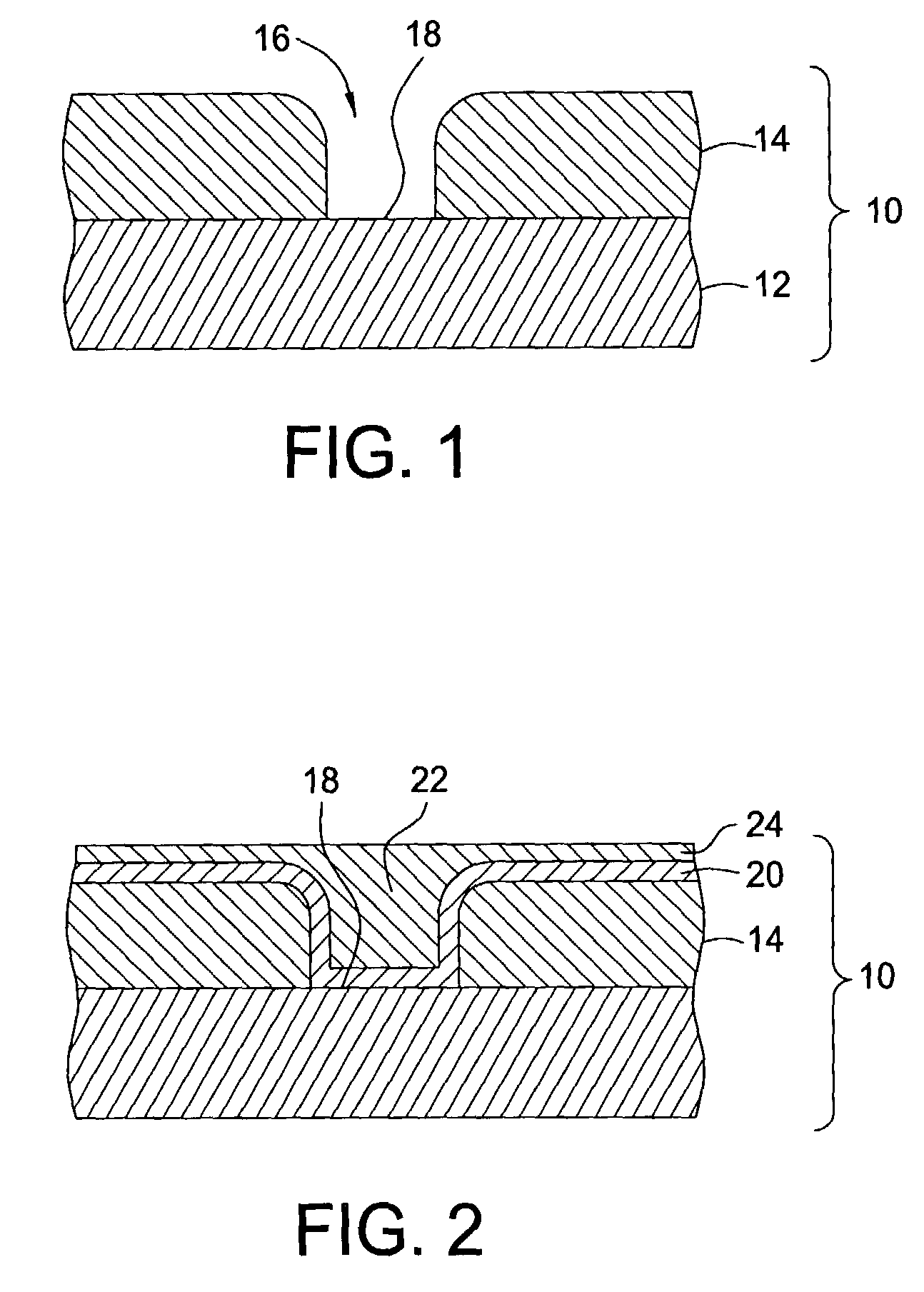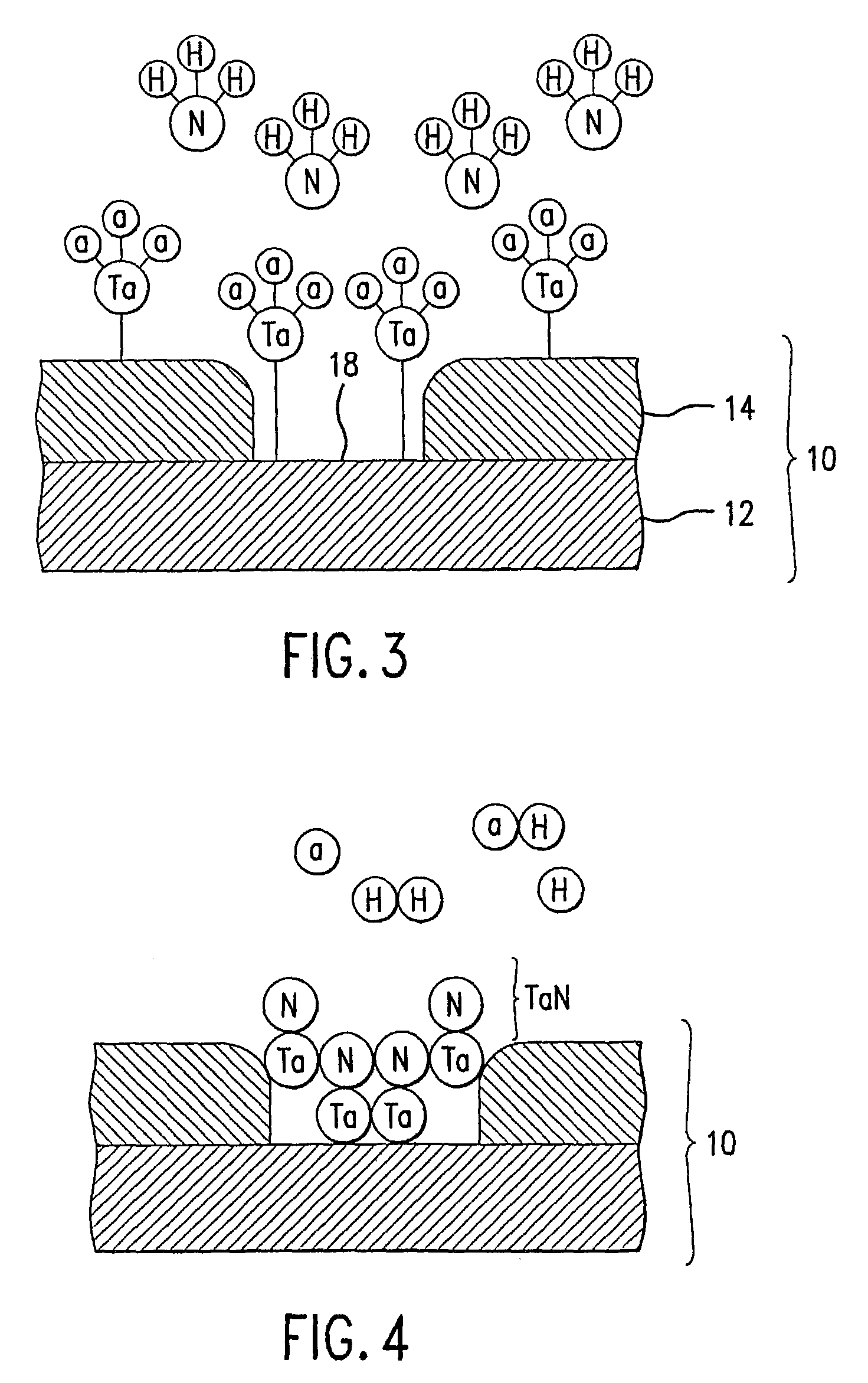Sequential deposition of tantalum nitride using a tantalum-containing precursor and a nitrogen-containing precursor
a technology of tantalum nitride and precursor, applied in the field of semiconductor processing, can solve the problems of limited use of sputter deposition of ta and/or tan films, failure to increase the operational frequency of integrated circuits, and undesirable intermetallic alloys
- Summary
- Abstract
- Description
- Claims
- Application Information
AI Technical Summary
Problems solved by technology
Method used
Image
Examples
Embodiment Construction
[0024]Referring to FIG. 1 an exemplary structure upon which a tantalum nitride layer, discussed more fully below, is formed in accordance with the present invention is shown as a substrate 10. Substrate 10 includes a wafer 12 that may have one or more layers, shown as layer 14, disposed thereon. Wafer 12 may be formed from any material suitable for semiconductor processing, such as silicon, and layer 14 may be formed from any suitable material, including dielectric or conductive materials. For purposes of the present example, layer 14 includes a void 16, exposing a region 18 of wafer 12.
[0025]Embodiments of the processes described herein deposit tantalum-containing materials or tantalum nitride on many substrates and surfaces. Substrates on which embodiments of the invention may be useful include, but are not limited to semiconductor wafers, such as crystalline silicon (e.g., Sior Si), silicon oxide, silicon germanium, doped or undoped polysilicon, doped or undoped silicon wafers si...
PUM
| Property | Measurement | Unit |
|---|---|---|
| Temperature | aaaaa | aaaaa |
| Temperature | aaaaa | aaaaa |
| Temperature | aaaaa | aaaaa |
Abstract
Description
Claims
Application Information
 Login to View More
Login to View More - R&D
- Intellectual Property
- Life Sciences
- Materials
- Tech Scout
- Unparalleled Data Quality
- Higher Quality Content
- 60% Fewer Hallucinations
Browse by: Latest US Patents, China's latest patents, Technical Efficacy Thesaurus, Application Domain, Technology Topic, Popular Technical Reports.
© 2025 PatSnap. All rights reserved.Legal|Privacy policy|Modern Slavery Act Transparency Statement|Sitemap|About US| Contact US: help@patsnap.com



